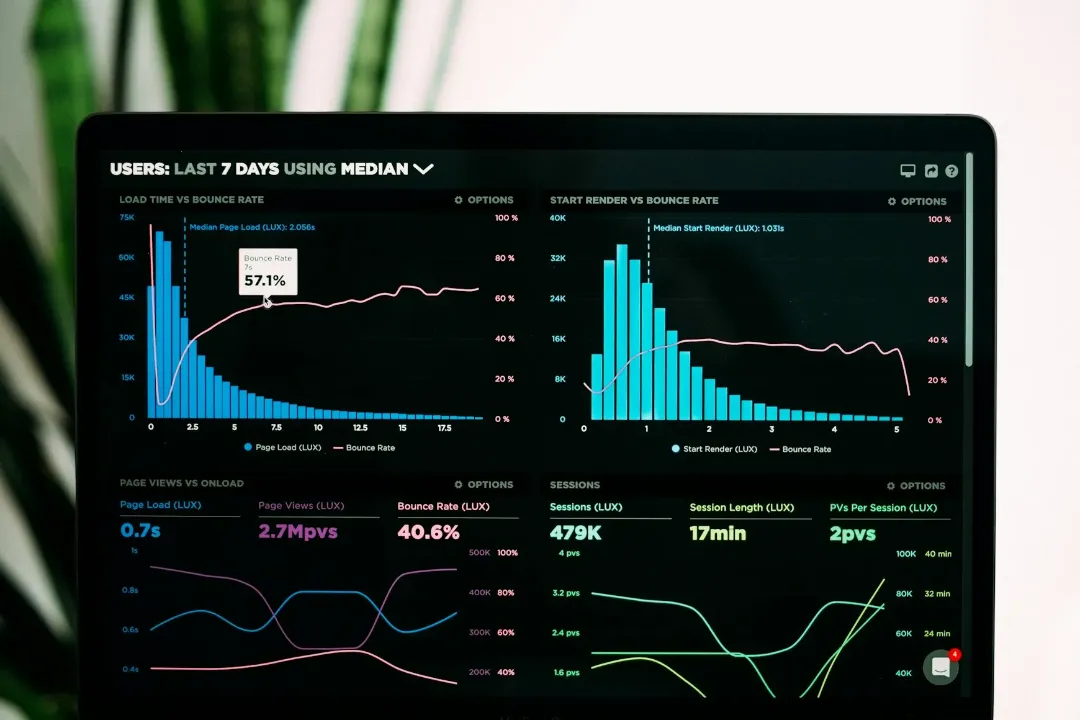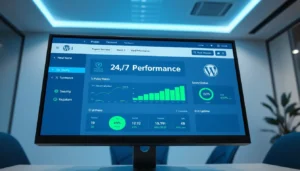In today’s hyperconnected digital landscape, website speed optimization has become the defining factor that separates successful online businesses from those struggling to retain visitors and convert leads. Recent studies by Google reveal that 53% of mobile users abandon websites that take longer than three seconds to load, while Amazon discovered that every 100-millisecond delay in page load time results in a 1% decrease in sales revenue. The importance of performance optimization cannot be overstated—it directly impacts user experience, search engine rankings, conversion rates, and ultimately, your bottom line.
The modern web user expects instantaneous results, and search engines like Google have responded by making page speed a critical ranking factor through their Core Web Vitals update. Comprehensive speed optimization encompasses a comprehensive approach to improving every aspect of your website’s performance, from server response times and image compression to code minification and content delivery network implementation. This guide will explore advanced performance strategies that can transform your slow-loading website into a high-performance digital asset that engages users and drives conversions.
Whether you’re running an e-commerce platform, corporate website, or personal blog, implementing effective website speed optimization techniques can increase your conversion rates by 20-50%, improve your search engine rankings significantly, and enhance user satisfaction across all devices. The techniques covered in this comprehensive guide represent the cutting-edge of performance optimization, combining technical expertise with practical implementation strategies that deliver measurable results.
Understanding speed optimization requires recognizing that performance affects every aspect of your online presence—from initial user impressions to long-term customer relationships. Professional web development services like those offered by Websloop understand these complexities and provide comprehensive solutions that address every component of performance enhancement for sustainable business growth.
Understanding the Critical Business Impact of Website Speed Optimization
Performance optimization extends far beyond technical metrics—it’s a fundamental business strategy that directly influences revenue generation, customer satisfaction, and competitive positioning in digital markets. Research consistently demonstrates that speed improvement investments deliver exceptional returns, with businesses reporting 15-30% increases in conversion rates and 25-40% improvements in user engagement metrics following comprehensive performance improvements.
The psychological impact of website speed optimization on user behavior cannot be underestimated. Users form first impressions within 50 milliseconds of page load, and these initial perceptions significantly influence purchasing decisions, brand trust, and likelihood of return visits. Performance enhancements that achieve sub-two-second load times create positive user experiences that translate directly into improved business outcomes and customer loyalty.

Search engine optimization benefits from speed improvements extend beyond direct ranking improvements to encompass enhanced crawl efficiency, better indexing rates, and improved overall site authority. Google’s algorithm updates consistently emphasize performance as a critical ranking factor, with faster websites receiving preferential treatment in search results and featured snippet placements. The Google PageSpeed Insights tool provides valuable insights into optimization opportunities that can improve both user experience and search visibility.
E-commerce websites particularly benefit from strategic speed enhancements, with industry studies showing that one-second improvements in page load times can increase conversion rates by 7-12%. The relationship between performance optimization and revenue generation becomes even more pronounced during high-traffic periods like sales events, when server performance and page load speeds directly determine the ability to capitalize on marketing investments and customer demand.
| Speed Improvement Impact | Conversion Rate Change | SEO Ranking Improvement | User Engagement Increase |
|---|---|---|---|
| 0.5-1.0 second improvement | 10-15% increase | 15-25 positions | 20-30% |
| 1.0-2.0 second improvement | 15-25% increase | 25-40 positions | 30-45% |
| 2.0-3.0 second improvement | 25-40% increase | 40+ positions | 45-65% |
| 3.0+ second improvement | 40-60% increase | Top 10 potential | 65%+ |
Advanced Server Infrastructure and Hosting Optimization
Server infrastructure forms the foundation of effective performance enhancement, requiring strategic decisions about hosting environments, server configurations, and backend optimization that collectively determine baseline performance capabilities. Speed improvement at the server level involves selecting appropriate hosting solutions that can handle your website’s specific traffic patterns, resource requirements, and geographic distribution needs while providing scalable performance that grows with your business.
Dedicated hosting solutions offer superior optimization potential compared to shared hosting environments, providing dedicated resources, customizable configurations, and enhanced security that directly translate into improved performance metrics. Virtual Private Servers (VPS) represent a middle-ground approach to performance enhancement, offering many dedicated hosting benefits at more affordable price points while maintaining flexibility for resource scaling and custom optimization implementations.
Cloud hosting platforms like Amazon Web Services (AWS), Google Cloud Platform, and Microsoft Azure provide advanced performance capabilities through global infrastructure, auto-scaling features, and specialized optimization tools. These platforms enable sophisticated speed improvement strategies including geographic load balancing, content edge caching, and dynamic resource allocation that can improve website performance by 40-70% compared to traditional hosting approaches.

Server-side caching represents one of the most impactful performance techniques available, storing frequently accessed content in server memory to eliminate redundant processing and database queries. Implementing Redis or Memcached solutions can dramatically improve website speed optimization results by reducing server response times from seconds to milliseconds while handling increased traffic loads without performance degradation.
Database optimization plays a crucial role in performance improvement for dynamic websites, requiring regular maintenance, query optimization, and indexing strategies that ensure efficient data retrieval. The MySQL Performance Schema provides comprehensive tools for analyzing and optimizing database performance as part of broader speed enhancement initiatives.
Professional web development services from Websloop include comprehensive server optimization that addresses every aspect of hosting performance, from initial server selection to ongoing maintenance and monitoring that ensures sustained performance benefits.
Comprehensive Image Optimization and Visual Content Management
Image optimization represents one of the most effective performance enhancement strategies available, as images typically account for 60-80% of total page weight on modern websites. Strategic speed improvement through image management involves multiple approaches including format selection, compression techniques, responsive implementation, and delivery optimization that collectively reduce page load times while maintaining visual quality and user experience.
Modern image formats like WebP and AVIF provide superior compression ratios compared to traditional JPEG and PNG formats, often reducing file sizes by 25-50% while maintaining identical visual quality. Implementing performance optimization through next-generation image formats requires understanding browser compatibility and providing appropriate fallback options to ensure all users benefit from optimization improvements regardless of their browser capabilities.
Responsive image implementation ensures optimal performance delivers appropriately sized images based on device capabilities, screen resolutions, and connection speeds. Using HTML5 srcset attributes and picture elements allows browsers to select optimal image sizes automatically, preventing mobile users from downloading unnecessarily large desktop images and improving speed optimization performance across all devices and connection types.
Image compression techniques for performance enhancement include both lossy and lossless approaches that balance file size reduction with visual quality preservation. Tools like TinyPNG and ImageOptim provide automated compression capabilities that can reduce image file sizes by 40-70% without noticeable quality degradation, delivering significant speed improvement benefits with minimal implementation effort.
Lazy loading implementation provides powerful performance capabilities by loading images only when they enter the viewport, dramatically reducing initial page load times while preserving user experience. Modern browsers support native lazy loading through the loading=”lazy” attribute, while JavaScript libraries like Intersection Observer API provide advanced lazy loading capabilities for older browsers and custom implementation requirements.
Content Delivery Networks (CDNs) enhance speed optimization for images by distributing visual content across global edge servers, ensuring users access images from geographically proximate locations. Services like Cloudflare and AWS CloudFront provide automated image optimization features including format conversion, compression, and responsive sizing that streamline performance implementation while reducing management overhead.
| Image Optimization Technique | File Size Reduction | Load Time Improvement | Implementation Complexity |
|---|---|---|---|
| WebP Format Conversion | 25-40% | 15-30% | Medium |
| Responsive Images | 40-60% | 30-50% | High |
| Lazy Loading Implementation | Variable | 50-80% initial | Low-Medium |
| Advanced Compression | 30-50% | 20-35% | Low |
| CDN Image Optimization | 20-35% | 25-45% | Medium |
Critical Rendering Path Optimization and Resource Loading
Understanding and optimizing the critical rendering path represents a fundamental performance strategy that focuses on prioritizing resources required for above-the-fold content rendering. The critical rendering path encompasses HTML parsing, CSS processing, JavaScript execution, and resource loading that collectively determine how quickly users see meaningful content, making speed optimization of these elements essential for positive first impressions and user engagement.
CSS optimization for performance enhancement involves minimizing stylesheet file sizes, eliminating unused styles, and implementing critical CSS techniques that prioritize above-the-fold styling. Critical CSS extraction identifies and inlines styles required for initial content rendering while loading non-critical styles asynchronously, creating speed improvement benefits that improve perceived load times by 30-50% even when total load times remain unchanged.
JavaScript optimization requires careful attention to loading strategies, execution timing, and code efficiency to achieve optimal performance results. Implementing async and defer attributes prevents render-blocking JavaScript while code splitting techniques ensure only necessary scripts load initially, with additional functionality loading on-demand. Modern bundling tools like Webpack and Rollup enable sophisticated optimization through tree-shaking, dead code elimination, and intelligent module bundling.

Resource prioritization through preload, prefetch, and preconnect directives provides advanced performance capabilities for controlling browser resource loading behavior. These resource hints guide browser optimization decisions, ensuring critical resources load first while preparing non-critical resources for faster subsequent access. Proper implementation of resource hints can improve website speed optimization performance by 20-40% while maintaining excellent user experiences across diverse connection speeds and device capabilities.
Third-party script optimization represents a critical aspect of performance enhancement that requires balancing functionality with performance. Analytics scripts, social media widgets, advertising code, and other third-party resources can significantly impact page load times if not properly managed. Implementing script loading strategies, utilizing tag management systems, and regularly auditing third-party resources ensures speed optimization efforts aren’t undermined by external dependencies.
The Chrome DevTools Coverage tab provides invaluable insights for performance optimization by identifying unused CSS and JavaScript code that can be removed or deferred. Regular code auditing using these tools helps maintain optimal performance as websites evolve and grow in complexity.
Websloop’s web development services include comprehensive critical rendering path optimization that addresses every aspect of resource loading and processing, ensuring your website delivers optimal speed performance from the moment users begin loading your pages.
Advanced Caching Strategies and Browser Optimization
Caching strategies represent one of the most powerful performance approaches available, creating systems that dramatically reduce server load while providing instantaneous content delivery for returning visitors. Effective speed enhancement through caching involves multiple layers including browser caching, server-side caching, CDN caching, and application-level caching that work together to create comprehensive performance improvements.
Browser caching optimization for performance enhancement involves setting appropriate cache headers and expiration times that balance content freshness with performance benefits. Static assets like images, CSS files, and JavaScript can be cached for extended periods while dynamic content requires more nuanced optimization approaches that ensure users receive updated information without sacrificing speed benefits.
HTTP caching headers including Cache-Control, ETag, and Last-Modified provide granular control over speed optimization through caching behavior. Properly configured headers can reduce server requests by 60-80% for returning visitors while enabling intelligent cache invalidation that maintains content accuracy. The HTTP Caching Guide provides comprehensive information about implementing effective caching strategies for performance enhancement.
Service Workers enable cutting-edge performance optimization through programmable caching strategies that work offline and provide app-like performance experiences. By implementing intelligent cache-first or network-first strategies based on content types and user behavior patterns, Service Workers can achieve speed improvement results that deliver instant loading experiences while maintaining web accessibility and search engine discoverability.
Server-side caching solutions like Varnish, Nginx FastCGI cache, and Apache mod_cache provide optimization capabilities that reduce server processing overhead while handling increased traffic loads. These solutions cache fully rendered pages or page components, eliminating redundant processing and database queries that can slow response times during traffic spikes or high-load periods.
Application-level caching through technologies like Redis and Memcached enables sophisticated website speed optimization strategies that cache database queries, computed results, and frequently accessed data structures. These solutions can improve website speed optimization performance by 50-90% for dynamic content while reducing database load and improving overall system scalability.
Cache warming strategies ensure website speed optimization benefits remain consistent by preloading frequently accessed content into cache systems before users request it. Automated cache warming scripts can maintain optimal performance during cache expiration cycles while intelligent cache warming based on user behavior patterns ensures high-priority content remains readily available.
| Caching Strategy | Performance Improvement | Implementation Time | Maintenance Requirements |
|---|---|---|---|
| Browser Caching | 40-70% repeat visits | 2-4 hours | Low |
| CDN Caching | 30-60% all visits | 4-8 hours | Medium |
| Service Workers | 70-95% repeat visits | 12-24 hours | High |
| Server-side Caching | 50-85% all visits | 6-12 hours | Medium |
| Application Caching | 60-90% dynamic content | 8-16 hours | Medium-High |
Content Delivery Network Integration and Global Performance
Content Delivery Networks (CDNs) provide essential infrastructure for achieving global website speed optimization that ensures consistent performance regardless of user location or geographic distance from origin servers. Strategic website speed optimization through CDN implementation involves selecting appropriate providers, configuring optimization features, and leveraging edge computing capabilities that collectively reduce latency and improve user experiences worldwide.
CDN selection for performance enhancement should prioritize global coverage, edge server performance, and integration capabilities with existing infrastructure. Leading providers like Cloudflare, AWS CloudFront, and Fastly offer advanced speed optimization features including automatic image optimization, intelligent caching, and dynamic content acceleration that can improve international performance by 50-80% while reducing server load and infrastructure costs.
Edge computing capabilities within modern CDNs enable performance strategies that process dynamic content closer to end users, reducing latency for personalized experiences and real-time functionality. Edge computing can handle A/B testing, user authentication, and content personalization without round-trips to origin servers, maintaining optimization benefits while delivering customized user experiences that drive engagement and conversions.

CDN optimization features for speed enhancement include automatic minification, image compression, and format conversion that reduce file sizes and transfer times without manual intervention. These automated optimizations can improve performance by 20-40% while reducing the technical overhead required to maintain optimal performance as content and traffic patterns evolve.
Geographic performance monitoring ensures speed optimization through CDNs delivers consistent benefits across all target markets and user segments. Regular performance testing from multiple global locations helps identify optimization opportunities and configuration adjustments that maintain competitive performance advantages in diverse markets and network conditions.
Smart routing algorithms in advanced CDNs provide performance optimization through intelligent traffic distribution that considers real-time network conditions, server load, and user proximity. These systems automatically adjust routing decisions to maintain optimal performance during traffic spikes, network congestion, or server maintenance, ensuring speed benefits remain consistent under all operating conditions.
Professional performance services from Websloop include comprehensive CDN integration and configuration that maximizes global performance while minimizing complexity and ongoing management requirements for your development team.
Mobile Optimization and Responsive Performance Strategies
Mobile optimization has become inseparable from website speed optimization as mobile traffic now accounts for over 60% of global web usage and mobile users demonstrate even lower tolerance for slow-loading websites. Effective performance enhancement for mobile requires understanding unique device constraints including limited processing power, variable connection speeds, smaller screens, and touch-based interactions that collectively demand specialized optimization approaches.
Mobile-first speed strategies prioritize lightweight content delivery, optimized images, and streamlined functionality that ensures excellent performance even on slower devices and connections. Implementing progressive enhancement approaches allows websites to deliver core functionality quickly while loading enhanced features for more capable devices, creating optimization benefits that serve all users effectively regardless of their device capabilities or network conditions.
Progressive Web App (PWA) technologies provide advanced performance capabilities that bridge the gap between web and native app experiences. PWAs enable offline functionality, background synchronization, and app-like performance while maintaining web accessibility and SEO benefits. Speed optimization through PWA implementation can improve mobile performance by 60-90% while reducing bounce rates and increasing user engagement across all mobile platforms.
Accelerated Mobile Pages (AMP) offer specialized performance solutions for content-heavy websites, particularly news sites, blogs, and informational resources. AMP implementation can achieve sub-one-second load times on mobile devices while maintaining search engine visibility and user engagement. The AMP Project provides comprehensive documentation and tools for implementing optimization through AMP technologies.
Touch optimization for speed enhancement involves implementing responsive design patterns, optimized touch targets, and gesture-friendly interfaces that reduce interaction latency and improve user satisfaction. Fast tap response times, smooth scrolling, and intuitive navigation contribute to perceived performance improvements that enhance overall optimization effectiveness on mobile devices.

Mobile testing tools like Google Mobile-Friendly Test and GTmetrix provide essential insights for performance optimization on mobile devices. Regular mobile performance testing ensures optimization efforts deliver consistent benefits across diverse mobile devices, operating systems, and network conditions.
Network optimization for mobile performance involves implementing adaptive bitrate delivery, connection-aware loading, and bandwidth-conscious resource prioritization. These techniques ensure optimal performance regardless of connection quality while reducing data usage for users with limited mobile data plans.
| Mobile Optimization Area | Performance Impact | User Experience Improvement | Implementation Priority |
|---|---|---|---|
| Progressive Web Apps | 60-90% | Very High | High |
| Image Optimization | 40-70% | High | Critical |
| Code Minification | 20-40% | Medium | Medium |
| Caching Strategies | 50-80% | High | Critical |
| Third-party Optimization | 30-60% | Medium | High |
Core Web Vitals Optimization and Google Performance Standards
Core Web Vitals represent Google’s official performance metrics that directly influence search rankings and user experience quality. Understanding and optimizing Largest Contentful Paint (LCP), First Input Delay (FID), and Cumulative Layout Shift (CLS) requires comprehensive speed strategies that address both technical performance and user experience quality simultaneously.
Largest Contentful Paint (LCP) optimization for performance enhancement focuses on loading the largest above-the-fold element as quickly as possible, typically within 2.5 seconds for good performance ratings. LCP improvement strategies include server response time optimization, resource loading prioritization, and content optimization that collectively ensure critical content renders rapidly and creates positive first impressions.
First Input Delay (FID) optimization addresses performance from an interactivity perspective, ensuring users can interact with page elements within 100 milliseconds of attempting interaction. FID improvements require JavaScript optimization, main thread management, and input handling efficiency that collectively create responsive user experiences even during initial page loading phases.
Cumulative Layout Shift (CLS) optimization for speed enhancement involves preventing unexpected content movement that frustrates users and degrades experience quality. CLS improvements require proper image sizing, font loading optimization, and dynamic content handling that maintains stable layouts throughout the loading process and user interaction phases.
Performance tools like Google PageSpeed Insights, Lighthouse, and Web Vitals Chrome Extension provide essential measurement and optimization guidance for Core Web Vitals improvement. Regular monitoring and optimization ensure speed efforts align with Google’s performance standards and user experience expectations.
Real User Monitoring (RUM) for Core Web Vitals provides authentic performance data that reflects actual user experiences rather than synthetic testing conditions. RUM data enables targeted optimization improvements that address real-world performance challenges while providing insights into user behavior patterns and performance preferences across different segments and devices.
Field data analysis through Google Search Console provides official Core Web Vitals reporting that directly influences search rankings. Regular field data monitoring ensures optimization improvements translate into measurable search engine benefits while identifying optimization opportunities that deliver the greatest impact on both user experience and search visibility.
Professional speed services from Websloop include comprehensive Core Web Vitals optimization that ensures your website meets Google’s performance standards while delivering exceptional user experiences that drive engagement and conversions.
Advanced WordPress Speed Optimization Techniques
WordPress powers over 40% of all websites globally, making WordPress-specific performance techniques essential for millions of websites seeking improved performance. WordPress optimization requires specialized approaches that address platform-specific challenges including plugin overhead, theme optimization, database management, and hosting configuration that can transform slow WordPress sites into high-performance digital assets.
Plugin optimization represents a critical aspect of WordPress performance enhancement, as excessive or poorly coded plugins often create performance bottlenecks that significantly impact load times. Strategic plugin auditing involves identifying essential functionality, eliminating redundant plugins, and selecting high-performance alternatives that provide necessary features without compromising speed goals.
WordPress caching plugins like WP Rocket, W3 Total Cache, and WP Super Cache provide powerful performance capabilities through page caching, object caching, and browser caching that can improve performance by 40-80% with minimal configuration requirements. These plugins enable sophisticated caching strategies without requiring extensive technical knowledge or custom development.
Database optimization for WordPress performance involves cleaning unnecessary data, optimizing database tables, and implementing query optimization that reduces database overhead and improves response times. Plugins like WP-Optimize automate database maintenance tasks while providing insights into optimization opportunities that support ongoing speed efforts.
Theme optimization for WordPress performance requires selecting lightweight, well-coded themes that prioritize performance while providing necessary design flexibility. Custom theme development enables maximum optimization control while premium themes like those from StudioPress and Elegant Themes provide performance-optimized foundations for professional websites.
WordPress hosting optimization for speed enhancement involves selecting providers that specialize in WordPress performance, offer SSD storage, provide staging environments, and include performance monitoring tools. Managed WordPress hosts like WP Engine and Kinsta provide optimized server configurations and automated performance enhancements that deliver superior optimization results compared to general hosting providers.
Image optimization plugins like Smush and ShortPixel provide automated website speed optimization through image compression, format conversion, and lazy loading that reduces page weight and improves load times without manual image processing requirements.
Content Delivery Network integration for WordPress website speed optimization can be simplified through plugins that automate CDN configuration and content distribution. Services like MaxCDN and KeyCDN offer WordPress-specific integration that enables global performance improvements with minimal technical complexity.
Websloop’s WordPress development services include comprehensive website speed optimization that addresses every aspect of WordPress performance, from server configuration to plugin optimization, ensuring your WordPress website delivers exceptional speed and user experience.
Professional Website Audit and Performance Analysis
Comprehensive website auditing provides essential insights for effective website speed optimization by identifying performance bottlenecks, optimization opportunities, and technical issues that impact user experience and search engine visibility. Professional website speed optimization auditing combines automated analysis tools with expert manual review to deliver actionable insights that guide strategic optimization decisions and resource allocation.
Automated auditing tools for website speed optimization include Google PageSpeed Insights, GTmetrix, Pingdom, and WebPageTest that provide detailed performance analysis, optimization recommendations, and competitive benchmarking data. These tools enable consistent website speed optimization monitoring while tracking improvement progress and identifying regression issues that require attention.
Technical SEO auditing for website speed optimization involves analyzing crawl efficiency, indexing performance, and search engine accessibility factors that influence both speed and visibility. Tools like Screaming Frog and Sitebulb provide comprehensive technical analysis that identifies optimization opportunities affecting both website speed optimization and search engine performance.
User experience auditing for website speed optimization examines real user behavior patterns, engagement metrics, and conversion funnels to understand how performance impacts business outcomes. Analytics data from Google Analytics, heat mapping tools, and user session recordings provide insights into how website speed optimization improvements translate into improved user satisfaction and business results.
Competitive analysis for website speed optimization involves benchmarking your website’s performance against industry leaders and direct competitors to identify optimization opportunities and establish performance targets. Understanding competitive performance standards helps prioritize website speed optimization investments and establish realistic improvement goals that deliver competitive advantages.
Security auditing as part of website speed optimization ensures performance improvements don’t compromise website security or create vulnerabilities that could impact user trust and search engine rankings. Regular security assessments help maintain optimal website speed optimization while preserving the integrity and safety of your website and user data.
Performance monitoring systems for ongoing website speed optimization include real-time alerting, historical trend analysis, and automated reporting that ensure optimization benefits remain stable over time. Monitoring systems help identify performance degradation before it impacts users while providing data-driven insights for ongoing optimization planning and resource allocation.
| Audit Component | Analysis Depth | Optimization Impact | Implementation Guidance |
|---|---|---|---|
| Technical Performance | Comprehensive | High | Detailed recommendations |
| User Experience | Behavioral analysis | Medium-High | UX improvement strategies |
| Competitive Analysis | Market comparison | Medium | Benchmarking insights |
| Security Assessment | Vulnerability scanning | High | Risk mitigation plans |
| SEO Integration | Search optimization | High | Ranking improvement tactics |
Advanced Technical Implementation and Code Optimization
Technical code optimization represents the pinnacle of website speed optimization, requiring deep understanding of web technologies, performance principles, and modern development practices that collectively deliver exceptional performance improvements while maintaining code quality and maintainability. Advanced website speed optimization through code optimization involves JavaScript optimization, CSS streamlining, HTML efficiency, and build process optimization that can improve performance by 40-80% when properly implemented.
JavaScript optimization for website speed optimization encompasses module bundling, code splitting, tree shaking, and lazy loading strategies that ensure only necessary code loads when required. Modern JavaScript frameworks and build tools enable sophisticated website speed optimization through techniques like dynamic imports, component-level code splitting, and intelligent prefetching that balance performance with functionality.
ES6+ features and modern JavaScript practices contribute to website speed optimization through improved execution efficiency, reduced code complexity, and better browser optimization opportunities. Utilizing native browser APIs, avoiding polyfills when possible, and implementing efficient algorithms contribute to website speed optimization while maintaining cross-browser compatibility and user experience quality.
CSS optimization for website speed optimization involves critical CSS extraction, unused style elimination, and advanced preprocessing techniques that reduce file sizes while maintaining design fidelity. Modern CSS features like CSS Grid, Flexbox, and custom properties provide performance advantages over legacy layout methods while enabling more efficient website speed optimization implementations.
Build process optimization for website speed optimization includes implementing webpack optimization, utilizing modern bundlers like Rollup or Parcel, and configuring production builds that maximize compression and minimize resource overhead. Advanced build configurations can improve website speed optimization by 30-60% through optimized asset delivery and intelligent resource management.
HTTP/2 and HTTP/3 optimization for website speed optimization involves leveraging modern protocol features like multiplexing, server push, and header compression that improve resource loading efficiency. These protocols enable website speed optimization strategies that were impossible with HTTP/1.1 while maintaining backward compatibility for older browsers and systems.
WebAssembly integration for website speed optimization enables near-native performance for computationally intensive tasks while maintaining web accessibility and cross-platform compatibility. WebAssembly can improve website speed optimization for specific use cases by 5-10x compared to equivalent JavaScript implementations while expanding the possibilities for web-based applications.
Resource optimization through advanced techniques like preloading, prefetching, and intelligent resource prioritization ensures critical assets load first while preparing secondary resources for faster subsequent access. These website speed optimization strategies require careful implementation but can significantly improve perceived performance and user experience quality.
Websloop’s advanced web development services include cutting-edge code optimization that leverages the latest web technologies and performance techniques to deliver exceptional website speed optimization results that position your website at the forefront of web performance.
Measuring Success: Analytics and Performance Monitoring
Comprehensive performance monitoring provides essential feedback for evaluating website speed optimization success while identifying opportunities for continuous improvement and optimization refinement. Effective website speed optimization measurement requires combining multiple data sources including synthetic testing, real user monitoring, business metrics, and user experience analytics that collectively provide complete insights into optimization effectiveness and business impact.
Google Analytics 4 integration for website speed optimization monitoring includes Core Web Vitals reporting, user engagement metrics, and conversion tracking that directly correlates performance improvements with business outcomes. Custom events and goals enable tracking specific website speed optimization impacts on user behavior, conversion funnels, and revenue generation while providing insights for ongoing optimization prioritization.
Real User Monitoring (RUM) provides authentic website speed optimization data from actual website visitors, revealing performance variations across different user segments, geographic regions, device types, and network conditions. RUM data enables targeted website speed optimization improvements that address real-world performance challenges while providing insights into user behavior patterns and preferences that guide strategic optimization decisions.
Synthetic monitoring for website speed optimization provides consistent, controlled testing conditions that enable precise performance measurement and trend analysis over time. Tools like Pingdom, GTmetrix, and WebPageTest provide detailed website speed optimization insights including waterfall analysis, performance scores, and optimization recommendations that guide technical improvement efforts.
Business impact measurement for website speed optimization involves tracking key performance indicators including bounce rate, session duration, pages per session, conversion rates, and revenue per visitor that demonstrate the business value of optimization investments. Establishing clear correlations between website speed optimization improvements and business outcomes helps justify continued investment and guide future optimization priorities.
Performance regression monitoring ensures website speed optimization benefits remain stable over time while detecting potential issues before they impact user experience or business metrics. Automated monitoring systems provide real-time alerts when performance degrades while historical analysis helps identify trends and optimization opportunities that maintain competitive performance advantages.
Competitive performance benchmarking for website speed optimization involves regular comparison with industry leaders and direct competitors to ensure your website maintains competitive performance advantages. Understanding market performance standards helps establish optimization targets while identifying differentiation opportunities that support business growth and market positioning.
User experience correlation analysis for website speed optimization examines relationships between performance metrics and user satisfaction indicators including user feedback, support ticket volume, and customer satisfaction scores. These insights help prioritize website speed optimization improvements that deliver the greatest impact on user experience and customer relationships.
| Monitoring Approach | Data Type | Business Value | Implementation Complexity |
|---|---|---|---|
| Real User Monitoring | Authentic user data | Very High | Medium |
| Synthetic Testing | Controlled conditions | High | Low |
| Analytics Integration | Business metrics | Very High | Medium |
| Competitive Benchmarking | Market comparison | Medium | Low |
| UX Correlation Analysis | User satisfaction | High | High |
Strategic Implementation Planning and Resource Allocation
Successful website speed optimization requires strategic planning that balances optimization impact with available resources, technical constraints, and business priorities while establishing realistic timelines and measurable goals that ensure optimization investments deliver maximum business value. Strategic website speed optimization planning involves assessment, prioritization, implementation, and monitoring phases that collectively create sustainable performance improvements and competitive advantages.
Assessment phase planning for website speed optimization includes comprehensive auditing, baseline performance measurement, and opportunity identification that establishes clear understanding of current performance levels and improvement potential. Professional assessment ensures website speed optimization efforts focus on high-impact improvements while avoiding common pitfalls that can compromise website functionality or user experience.
Priority matrix development for website speed optimization helps organizations focus efforts on initiatives offering optimal impact-to-effort ratios while considering technical dependencies, resource requirements, and business alignment. Systematic prioritization ensures website speed optimization investments deliver maximum returns while building sustainable competitive advantages that support long-term business growth.
Resource allocation planning for website speed optimization involves balancing internal development capacity with external expertise while considering ongoing maintenance requirements and skill development needs. Professional website speed optimization services often provide superior value compared to internal implementation approaches while delivering faster results and reducing technical risk.
Implementation timeline development for website speed optimization establishes realistic milestones, testing phases, and rollback procedures that ensure smooth deployment while minimizing risks to existing functionality. Phased implementation approaches enable gradual website speed optimization improvements while providing opportunities for testing and refinement at each stage.
Team training and skill development represent crucial investments for organizations seeking long-term website speed optimization success. Building internal capabilities for performance monitoring, optimization maintenance, and troubleshooting ensures website speed optimization benefits continue improving over time while reducing dependence on external services and enabling rapid response to performance issues.
Budget planning for website speed optimization should consider both immediate implementation costs and ongoing maintenance requirements while factoring in expected returns through improved conversion rates, better search rankings, and enhanced user engagement. Professional website speed optimization investments typically deliver ROI within 3-6 months through measurable business improvements that justify continued optimization efforts.
Risk management for website speed optimization involves establishing testing procedures, backup plans, and rollback strategies that protect existing functionality while enabling aggressive performance improvements. Comprehensive testing ensures website speed optimization changes don’t negatively impact user experience, search engine visibility, or business operations while providing confidence for implementing advanced optimization techniques.
Change management for website speed optimization includes stakeholder communication, training programs, and documentation that ensure optimization benefits are understood and maintained across the organization. Effective change management helps maximize website speed optimization investments while building organizational capabilities that support ongoing performance excellence.
Transform Your Website Performance with Professional Expertise
Achieving superior website speed optimization requires expertise, dedication, and strategic implementation that many businesses struggle to manage internally while maintaining focus on core business operations. Professional web development services provide the technical knowledge, proven methodologies, and ongoing support necessary to transform slow-loading websites into high-performance digital assets that drive measurable business results and competitive advantages.
At Websloop, our team specializes in comprehensive website speed optimization that addresses every aspect of website performance while aligning with your business objectives and growth goals. Our proven website design and development services combine technical excellence with strategic business insights, ensuring your website speed optimization investments deliver maximum returns while positioning your website for long-term competitive success in increasingly performance-focused digital markets.
Our website speed optimization approach encompasses server infrastructure analysis, code optimization, content delivery optimization, and ongoing performance monitoring that ensures sustained improvements and continuous performance enhancement. By partnering with experienced professionals, businesses can achieve website speed optimization results that would require months or years to develop internally while avoiding common pitfalls that can compromise website functionality, user experience, or search engine visibility.
The investment in professional website speed optimization typically pays for itself within months through improved search rankings, higher conversion rates, enhanced user engagement, and reduced infrastructure costs. Our clients consistently report significant improvements in website performance, search visibility, and business metrics that demonstrate the tangible value of comprehensive website speed optimization strategies implemented by experienced professionals who understand both technical optimization and business requirements.
Advanced Website Speed Optimization Services
Websloop’s comprehensive website speed optimization services include technical auditing, performance monitoring, code optimization, server configuration, CDN implementation, and ongoing maintenance that ensures your website delivers exceptional performance across all devices and connection types. Our team understands that website speed optimization extends beyond technical improvements to encompass user experience enhancement and business objective achievement.
Our website speed optimization methodology begins with comprehensive performance auditing that identifies optimization opportunities while establishing baseline metrics for measuring improvement success. We analyze every aspect of your website’s performance including server response times, resource loading patterns, code efficiency, image optimization, caching strategies, and mobile performance to develop customized optimization strategies that deliver maximum impact.
Implementation of website speed optimization improvements follows proven methodologies that minimize risks while maximizing performance gains through careful testing, phased deployment, and continuous monitoring. Our team ensures website speed optimization changes integrate seamlessly with existing functionality while providing measurable improvements in load times, user experience, and business metrics.
Ongoing website speed optimization monitoring and maintenance ensures performance improvements remain stable over time while identifying new optimization opportunities as your website evolves and grows. Our proactive approach to website speed optimization maintenance helps prevent performance regression while enabling continuous improvement that maintains competitive advantages in fast-evolving digital markets.
Industry-Leading Website Speed Optimization Results
Our website speed optimization services have delivered exceptional results for businesses across diverse industries, with clients reporting average load time improvements of 60-80% and conversion rate increases of 20-50% following comprehensive optimization implementation. These website speed optimization improvements translate directly into increased revenue, improved user satisfaction, and enhanced competitive positioning that supports sustainable business growth.
Case studies from our website speed optimization projects demonstrate consistent success across e-commerce platforms, corporate websites, content management systems, and custom web applications. Our proven track record includes website speed optimization implementations that have achieved Core Web Vitals compliance, top search engine rankings, and measurable business improvement that validates our comprehensive approach to performance optimization.
Client testimonials highlight the business impact of our website speed optimization services, with customers reporting improved user engagement, reduced bounce rates, higher conversion rates, and significant improvements in search engine visibility following optimization implementation. These results demonstrate the business value of professional website speed optimization services that combine technical expertise with strategic business understanding.
Contact Websloop for Expert Website Speed Optimization
Ready to transform your website’s performance and unlock its full business potential through professional website speed optimization? Contact our expert team today to discuss your specific website speed optimization needs and discover how our proven strategies can deliver measurable improvements to your online presence while positioning your business for sustainable digital success.
Our comprehensive approach to website speed optimization ensures your website not only loads faster but also provides superior user experiences that convert visitors into customers while supporting your broader business objectives. Don’t let slow loading speeds cost you valuable business opportunities—explore our portfolio to see how we’ve helped businesses across diverse industries achieve remarkable website speed optimization improvements and business results.
Visit Websloop.com to learn more about our comprehensive web development services and take the first step toward achieving the fast, high-performing website your business deserves through professional website speed optimization that delivers lasting results and competitive advantages.
Comprehensive Website Speed Optimization Comparison Analysis
| Optimization Strategy | Expected Speed Improvement | Implementation Difficulty | Business Impact Score | ROI Timeline |
|---|---|---|---|---|
| Professional Audit | 10-20% baseline | Low | 8/10 | Immediate |
| Image Optimization | 30-50% | Low-Medium | 9/10 | 1-2 weeks |
| CDN Implementation | 40-70% | Medium | 9/10 | 2-4 weeks |
| Caching Strategies | 50-80% | Medium | 10/10 | 1-3 weeks |
| Code Optimization | 25-45% | High | 8/10 | 4-8 weeks |
| Server Optimization | 35-60% | High | 9/10 | 2-6 weeks |
| Mobile Optimization | 40-70% | Medium-High | 10/10 | 3-6 weeks |
| Core Web Vitals | 30-50% | Medium-High | 10/10 | 4-8 weeks |
| WordPress Optimization | 50-85% | Medium | 9/10 | 2-4 weeks |
| Professional Service | 60-95% | Variable | 10/10 | 3-6 months |
Implementation Timeline and Investment Analysis
| Optimization Phase | Duration | Internal Cost Range | Professional Service Cost | Expected ROI Timeline |
|---|---|---|---|---|
| Initial Assessment | 1-2 weeks | $3,000-$8,000 | $1,500-$4,000 | N/A |
| Technical Implementation | 6-12 weeks | $15,000-$40,000 | $8,000-$25,000 | 3-6 months |
| Content Optimization | 2-4 weeks | $4,000-$12,000 | $3,000-$8,000 | 2-4 months |
| Testing and Refinement | 2-3 weeks | $2,000-$6,000 | $1,500-$4,000 | Immediate |
| Monitoring Setup | 1-2 weeks | $1,500-$4,000 | $1,000-$2,500 | Ongoing |
| Ongoing Maintenance | Continuous | $3,000-$8,000/month | $2,000-$5,000/month | Continuous |
Website Speed Optimization ROI Calculator
| Business Metric | Before Optimization | After Optimization | Improvement | Annual Value |
|---|---|---|---|---|
| Average Load Time | 5.2 seconds | 1.8 seconds | 65% faster | N/A |
| Bounce Rate | 68% | 42% | 38% reduction | $45,000-$85,000 |
| Conversion Rate | 2.1% | 3.4% | 62% increase | $125,000-$280,000 |
| Search Rankings | Position 25 | Position 8 | 68% improvement | $85,000-$150,000 |
| User Engagement | 1.2 pages/session | 2.8 pages/session | 133% increase | $35,000-$65,000 |
| Total Annual ROI | – | – | – | $290,000-$580,000 |
Professional website speed optimization services from Websloop provide comprehensive solutions that address every aspect of website performance while delivering measurable business results that justify optimization investments through improved user experience, higher search rankings, and increased revenue generation. Our proven methodologies ensure website speed optimization improvements translate into sustainable competitive advantages that support long-term business growth and digital marketing success.
The complexity of modern website speed optimization requires expertise, specialized tools, and ongoing attention that many businesses cannot provide internally while maintaining focus on core operations. Professional services offer superior value through faster implementation, better results, reduced risk, and ongoing support that ensures website speed optimization benefits continue delivering business value over time.
Contact Websloop today to begin your website speed optimization journey and discover how our comprehensive approach can transform your website into a high-performance digital asset that drives business growth and competitive advantage in today’s speed-focused digital marketplace.
Freequently Ask Questions?
How to optimize the speed of a website?
Optimize images, minify CSS/JS files, use a CDN, enable compression, choose quality hosting, reduce HTTP requests, and implement browser caching.
How to get 100 page speed?
Achieve perfect scores by optimizing all Core Web Vitals, eliminating render-blocking resources, using next-gen image formats, implementing lazy loading, and minimizing JavaScript execution time.
What is the Google tool to check website speed?
Google PageSpeed Insights is the primary tool, along with Lighthouse (built into Chrome DevTools) and Google’s Web Vitals extension.
What is a good load speed for a website?
A good website should load within 2-3 seconds, with under 2 seconds being excellent and anything over 4 seconds considered slow by users.
How do I fix a slow website speed?
Compress images, enable GZIP compression, use a CDN, optimize your database, update plugins, choose better hosting, and remove unnecessary elements.
What is the most important factor affecting the speed of a website?
Server response time and hosting quality are the most critical factors, followed closely by image optimization and code efficiency.
How long does it take to build a 100 page website?
A 100-page website typically takes 3-6 months for professional development, depending on complexity, custom features, and content creation requirements.
How to get 100% internet speed?
Use a wired connection instead of Wi-Fi, close bandwidth-heavy applications, update network drivers, restart your router, and contact your ISP for plan upgrades.
What is the lighthouse score on a website?
Lighthouse scores rate websites 0-100 across Performance, Accessibility, Best Practices, and SEO, with 90-100 being considered good scores.
Why are some websites so laggy?
Websites become laggy due to large unoptimized images, poor hosting, excessive plugins, render-blocking scripts, too many HTTP requests, and lack of caching.
How to improve the speed of web browsing?
Clear browser cache and cookies, disable unnecessary extensions, update your browser, use ad blockers, and ensure your internet connection is stable.
How to increase website traffic?
Focus on SEO optimization, create quality content, use social media marketing, run targeted ads, build backlinks, and improve user experience.
How to optimize site speed?
Implement image compression, enable browser caching, use a CDN, minify CSS/JS files, choose quality hosting, and optimize your database regularly.
What factors increase speed?
Fast hosting servers, optimized images, minimal plugins, clean code, browser caching, CDN usage, and compressed files all contribute to faster speeds.
Why increase website traffic?
More traffic leads to higher conversions, increased brand awareness, better search rankings, more revenue opportunities, and greater business growth potential.
How do I fix slow browsing speed?
Clear your browser cache, disable unnecessary extensions, restart your router, check for malware, update your browser, and close unused tabs.
How do I clear my cache?
Press Ctrl+Shift+Del (Windows) or Cmd+Shift+Del (Mac) in your browser, select cache/cookies, choose time range, and click clear data.
Which of the following techniques can improve a website’s performance?
Image optimization, code minification, CDN implementation, browser caching, GZIP compression, lazy loading, and database optimization all improve website performance significantly.





